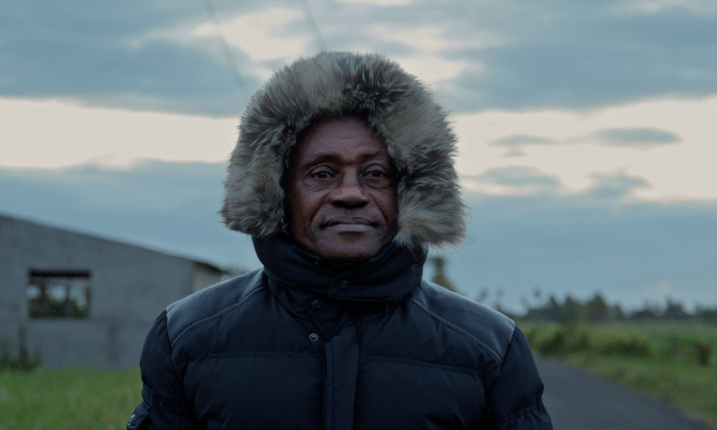Lunch with Féfé Limbé
Interview with Julien Silloray, director of Féfé Limbé
Where did you get the inspiration for Féfé Limbé?
During a rehearsal on my previous short film. Pierre Valcy (he had a supporting role in that film) confided in me in quite an unexpected way. Teary-eyed, he told me about his marital issues including the separation from his first wife. Pierre is deeply sentimental, unlike the cliché of Caribbean men. I wanted to fictionalize his romance troubles.
Why did you create a character as gentle as Félicien, so quirky in contrast to contemporary life?
This gentleness comes first and foremost from the actor who plays Féfé. I knew Pierre Valcy before writing the script. His gentleness touches me and adds to a style I developed. That style was already there in my previous film. It’s a tenderness I have for the men that I film, who are not actors, but people with strong personalities who I have met by chance or through untraditional casting methods. Regarding his quirky rhythm, it became evident from the beginning of the shoot. Pierre has had trouble with his hips since he had an accident on a job site a few years back. With the stress of the shoot, his pain increased. All his movements and body language became slower. I decided to incorporate this slowness because it fit the character and his mood. It also became a way for me to experiment with rhythm. I did not learn filmmaking formally, so I continue to pick up a lot through working on these first short films.
And how did you find the actor to play Félicien?
I met Pierre Valcy on the set of my first film which was shot near his home. He came over to give a hand to our crew. I was moved by his charm. There’s something strange in his eyes filled with melancholy, and his peculiar laugh. I immediately cast him, and we remained friends.
Why were you interested in the quest for love by an adult rather than by a teenager or young adult?
Short films and first features deal often in the love and romance problems of teenagers. It took me some time to connect with the aesthetic and thematic questions of young filmmakers whose work I had seen. Meanwhile, I had developed a fascination for the aging people in the Caribbean, which is a mysterious world that was near to me when I grew up, but with some distance. I made that world the center of my first three short films, like a triptych. My next series of films will have actors of my own generation.
The visuals of the film have a delicacy and melancholy that are palpable, almost an extension of the character. Why and how did you construct the film to make these aspects come to the surface?
The melancholic tone was present from the time of scripting, and it guided my writing, especially for the ending of my films. The delicacy… I try not to be too heavy-handed… but that’s a rule shared among all directors. I don’t really know. I don’t have enough perspective or experience. The shoot is a patchwork formed by the choice of actor, then how he is directed, along with a directing style that is simple and natural. Then making sober choices in post-production. I would love to be even more sober. But my mistakes during shooting would not allow me to do that. It’s not good to cheat things too much.
Why did you want to leave the “last choice” to the viewer? Could there be a sequel to Féfé limbé ?
The ending was much clearer on paper. With special effects. When we shot it, in the short film style (cheaply), the result looked ridiculous and too easy. So I decided to stay with the same logic as in my previous shorts: have an ambiguous ending that plays on the cultural differences between the Creole and non-Creole viewers. I write scenes with the idea that each is aware of the two possible endings, or two « levels» of ending: one is realistic, the other is poetic. I would like to think, perhaps naively, that based on their origins, viewers will have an interpretation, and that they would not make the same choice.
Any cinematic coups de cœur in the past year you’d like to tell us about?
The little poem by Damien Manivel called Le Parc. Ma’ Rosa by Brillante Mendoza, connected to reality. Mademoiselle by Park Chan-wook, incredible mastery. The Here After by Magnus von Horn, a first-time filmmaker… genius. Willy 1er by Ludovic Boukherma, Zoran Boukherma, Marielle Gautier, Hugo P. Thomas… they went to Besson’s film school? Damn, they’re good!
If you’ve already been to Clermont-Ferrand, could you share with us an anecdote from the festival? If not, what are your expectations for this year?
Two friends who found neither train ticket nor cheap logdging came down to the festival in their dad’s dump truck. They wanted to sleep in it. There are people who are very motivated to watch short films.
Féfé Limbé is being shown in National Competition F6.








